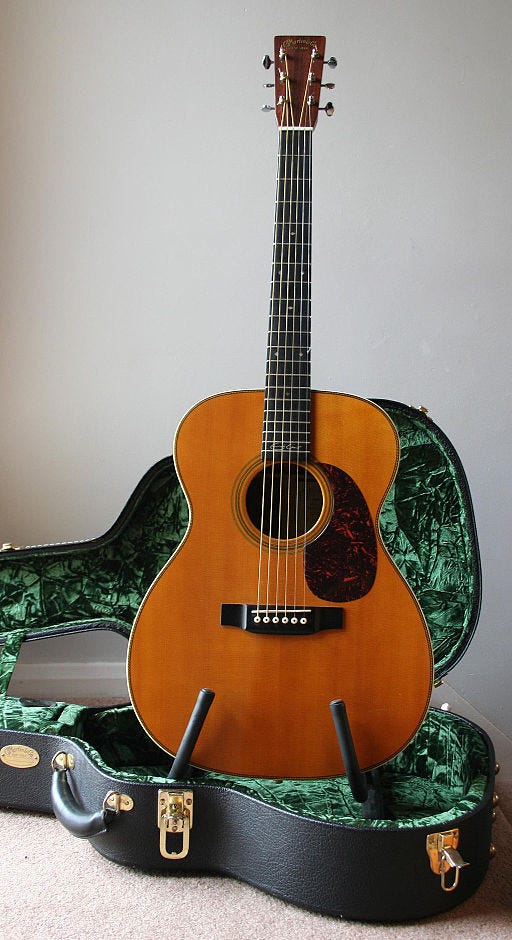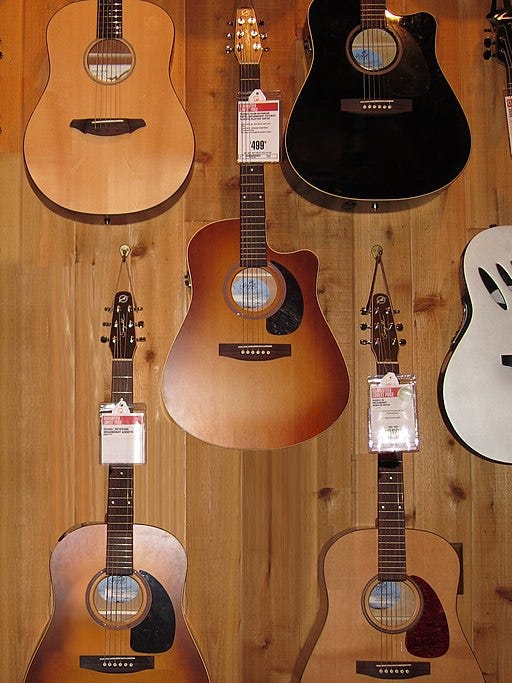E-A-D-G-B-e.
While this may be a random assortment of letters to most people, if you play guitar you recognize them at once: standard tuning.
Almost every guitar you have ever picked up and played has been tuned this way. It’s the tuning we all learned on and the one we all just accept as “normal.”
But why is this arrangement of notes considered the standard? What makes it better than any other alternative? How did we even come to that decision?
The answer can be summed up in one word: playability.
Finding the perfect interval
Standard tuning for the guitar is based on a series of perfect fourth intervals, with one major third interval mixed in for good measure. This means that the distance in pitch between most adjacent strings is four steps of the major scale (fourth), with one pair that is only three steps apart (third).
The guitar, of course, is not the only stringed instrument (as much as guitarists want you to think it is). And other instruments in the family have different intervals between strings. The violin and cello, for instance, are both tuned in fifths. So why not guitars?
It turns out, size matters. The scale length of a violin, for example, is only around 330 mm, compared to a typical guitar scale length of 650 mm. With such a smaller neck, reaching larger intervals on a violin with your fingers is not as challenging as trying the same feat on an acoustic guitar. (If you doubt this, try to play the guitar part on Every Breath You Take. Now imagine every song being this hard.)
And even though the cello has a longer scale length than even a traditional guitar, it’s still easier to reach extended intervals because it is played vertically. The fact that guitarists must curl their wrist when playing doesn’t allow for comfortably reaching across so many frets.
To put it simply, using fourths to tune a guitar makes playing the instrument easier to play.
There’s just one problem…
So if fourths is the way to go, why not have the intervals be the same between all the strings? Why add in that pesky third between the G and B strings? After all, having the same interval between each string would make moving chords and scales around the fretboard a simple affair, because the same shapes would work everywhere.
The main issue with this approach is the fact that there are six strings. If you were to tune a guitar to all fourths, you would end up with E-A-D-G-C-f. The problem is evident — the low E string would clash with the high F string. While you could get around this problem with open chords, barre chords would be a nightmare!
The simplest solution was to change an interval to avoid the discordant E/f combination, which is exactly what happened when players added the third between the G and B strings. This brought the high and low strings back into a much nicer E/e relationship.
The result of this tuning was an instrument on which a person could play both chords and scales fairly easily, without dissonant notes or too-difficult fingerings.
Don’t worry, the Italians already figured it out
From a historical perspective, standard tuning actually dates back hundreds of years, although it probably wasn’t called by that name at the time. In the 16th century, the Italian folk guitar, or chitarra battente, had five courses (a course is a set of strings, like what’s on a modern 12-string guitar) and was tuned A-D-G-B-E.

When six-string guitars came around two hundred years later, they simply added a low E string and kept the tuning of the popular Italian chitarra, thus finding the ideal tuning solution.
In the end, it just works
The intervals between guitar strings were refined and perfected hundreds of years ago because they were simply the best choice given the overall considerations of the instrument. But that leaves one question: Why do the strings start and end with E? Why not D, C, or B?
The answer is that no one really knows. However, it seems to me that when you consider the scale length of a guitar and the ideal diameter and tension of the various strings, E to E just makes sense. Lower-pitched tunings tend to buzz and rattle, and higher-tuned strings are prone to breaking. Just like the standard intervals, it’s likely that starting and ending with E just worked the best out of all the options.
People are nothing if not practical, and standard tuning for the guitar is a perfect example of this. In the end, guitars are tuned the way they are because it just works. And while there are many different alternates and variations, standard is still the king after 400 years — and will be for the foreseeable future.





